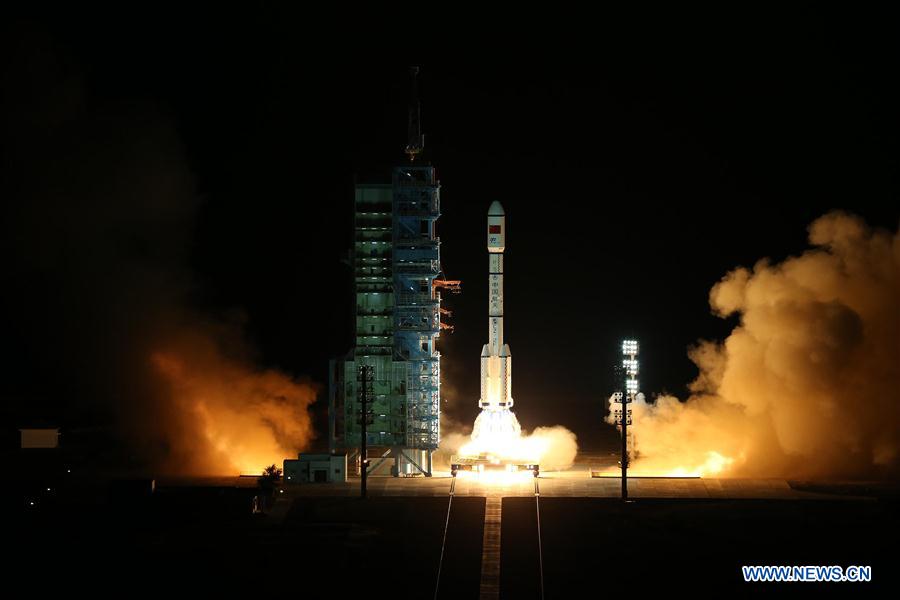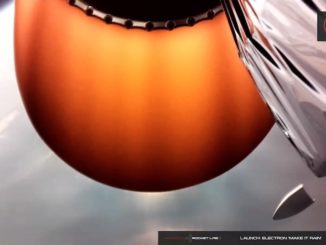
A mysterious space vehicle described by Chinese state media as an experimental reusable spacecraft completed a two-day flight in low Earth orbit Sunday.
The spacecraft took off on top of a Long March 2F rocket Friday from the Jiuquan launch base in the Gobi Desert of northwestern China, according to a statement from the China Aerospace Science and Technology Corp., or CASC, the state-owned company that oversees China’s space industry.
CASIC and Chinese state media did not report the mission’s launch time. Chinese officials also did not release any photos of the Long March 2F rocket or its secret payload, which was widely suspected by space observers inside and outside of China to be a winged spaceplane.
The U.S. military’s network of satellite tracking stations detected the clandestine Chinese spacecraft in an orbit ranging in altitude between 206 miles and 216 miles (332 and 348 kilometers). The spacecraft was tracked in an orbital plane tilted 50.2 degrees to the equator.
Analysts who assessed the spacecraft’s orbital data pinned down the mission’s launch time to around 0730 GMT (3:30 a.m. EDT; 3:30 p.m. Beijing time) Friday, Sept. 4.
Chinese state media reported the name of the payload as Chongfu Shiyong Shiyan Hangtian Qi, which translates to Reusable Test Spacecraft.
China’s official Xinhua news agency said Sunday the reusable spacecraft successfully landed Sunday, Sept. 6, after flying in orbit for two days.
“The complete success of this experiment marks an important breakthrough in (China’s) technology research on reusable spacecraft,” Xinhua said, adding that reusable technology will offer a less expensive method to exploit “peaceful” uses of space.
Nevertheless, the secretive nature of the spacecraft and its mission — even by Chinese standards — points to a military purpose. Some analysts compared the spacecraft, assumed to be a winged vehicle, to the U.S. Air Force’s reusable X-37B spaceplane.
Without divulging specifics about the reusable test spacecraft, a military source told the South China Morning Post, a Hong Kong newspaper, that “maybe you can take a look at the U.S. X-37B.”
The state-owned Xinhua news agency reported in 2017 that China planned to launch a reusable spacecraft in 2020 designed to “fly into the sky like an aircraft.”
Xinhua said at the time that the new spaceplane could transport people or payloads into orbit and return to Earth.
Chen Hongbo, a researcher from CASC, said in 2017 that the spacecraft could launch more often at lower cost than conventional rockets, “bringing new opportunities for more people to travel into space,” Xinhua reported.
In a 2017 interview with Science and Technology Daily, Chen said China’s spaceplane — designed to be reused up to 20 times — would perform several test flights. That suggests more Chinese spaceplane missions could be planned.
The vehicle described by Chen would consist of two stages — a booster and an orbiting upper stage with payload compartment — and would launch vertically. Each stage would be fitted with wings to allow the vehicles to return to Earth for horizontal landings on runways.
A subscale version of the reusable launcher, or just its orbiting component, may have been the subject of the test flight over the weekend.
Chen said the spaceplane could eventually transport personnel and cargo to China’s future space station, and launch other payloads for military and civilian users.
The test spacecraft launched Friday flew into orbit on top of a Long March 2F rocket, China’s only human-rated launcher. It was the 14th flight of a Long March 2F rocket, following previous missions that carried Chinese astronauts and prototype modules for China’s planned space station.
China plans to launch its first crew to the full-size space station in 2021, using a Long March 2F rocket and a Shenzhou capsule.
Test spacecraft’s landing site unconfirmed, but evidence points to remote desert airbase
Chinese state media did not announce the location of the reusable test spacecraft’s landing Sunday, but experts said the object’s orbital track suggested it could have returned to Earth at a site in the Taklamakan Desert of northwestern China.
An airbase near China’s Lop Nor nuclear test site could have been the mission’s landing site, according to Marco Langbroek and Jonathan McDowell, two widely-respected trackers of global space activity.
This is the potential landing site in the Taklamakan Desert: a triangular arrangement of 5 km long airstrips, one of it parallel to the orbital track of the spacecraft.
The orbital track passes 42.5 km to the NW of it around 1:54 UT.
Copernicus Sentinel images from 23 Aug 2020. pic.twitter.com/4Ftm2t5mK9— Dr Marco Langbroek (@Marco_Langbroek) September 6, 2020
Satellite imagery from Planet, a U.S.-based remote sensing company, appeared to show objects on one of the runways Sunday at the airbase near Lop Nor.
The U.S. military’s catalog of satellites in Earth orbit registered a new object shortly before the reusable test spacecraft landed. Analysts speculated it might be a service module, a power and propulsion package, or a subsatellite released from the test spacecraft.
McDowell concluded his analysis of the mysterious Chinese space mission by writing that all publicly available data are “consistent with an experimental X-37-style spaceplane.” However, he noted that a “reusable” spacecraft “doesn’t necessarily mean winged,” and added China could have tested a reusable capsule similar to SpaceX’s Dragon spacecraft.
“We should be clear about what is known and what is a guess.”
Recap on 2020-063 launch:
All data *consistent* with an experimental X-37-style spaceplane launch from Jiuquan at 0730 UTC Sep 4 and landing on runway 05 at Lop Nor at 0200 UTC Sep 6, after two days in a 331 x 347 km x 50.2 deg orbit and jettison of one object prior to deorbit— Jonathan McDowell (@planet4589) September 6, 2020
Email the author.
Follow Stephen Clark on Twitter: @StephenClark1.



